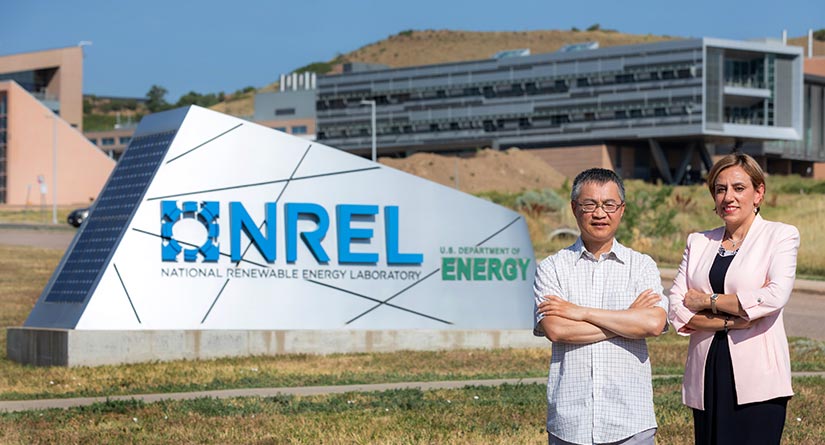NREL and Cemvita Factory Team Up To Put Carbon Dioxide to Good Use
Collaboration Will Help the Industry Uncouple Greenhouse Gases From Chemical Production

For some entrepreneurs, carbon dioxide (CO2) is more than a greenhouse gas. It is an opportunity and a business case for decarbonizing fuel and chemical production.
Among them is Tara Karimi who, along with Moji Karimi, founded biotech startup Cemvita Factory to commercialize the use of microorganisms to upgrade CO2 into valuable and specialized chemicals. The company—headquartered in Houston, Texas—aims to remove 250 million tons of CO2 from the atmosphere every year by 2050.
In a boost to that mission, Cemvita Factory is partnering with the National Renewable Energy Laboratory (NREL) to study and ultimately improve microbial CO2 utilization. Through a licensing agreement, Cemvita Factory will access NREL biological innovations and work with award-winning scientists, like Jianping Yu, who have developed pathways for using organisms to convert CO2 into valuable fuels and chemicals.
"Cemvita's mission is to deploy nature-inspired, economical solutions to empower the energy transition, and we look at every avenue to accelerate the realization of our vision," T. Karimi said. "Dr. Yu is a phenomenal scientist and has dedicated years of hard work in developing this technology. We couldn't be happier about this collaboration."
At the crux of the partnership is a portfolio of microorganisms both organizations have designed to absorb CO2, metabolize it, and ultimately churn out more complex chemicals.
"Microorganisms have a lot to teach us on how to use and manage carbon," said Yu, who leads work at NREL to develop CO2-utilizing microorganisms. "We've used those lessons to reimagine how to make chemicals and fuels with a lower carbon footprint."
Today, synthesizing chemicals, often from petroleum, contributes just over 2% of global carbon emissions—more if counting energy used to drive those processes. Chemicals made from captured and converted CO2, on the other hand, can achieve a net-negative footprint by ultimately lowering concentrations of the gas in the atmosphere.
That possibility is driving interest from both industry and government in improving and employing CO2 utilization to mitigate the climate crisis. The Inflation Reduction Act, passed by the U.S. Congress in August 2022, unlocks $369 billion in incentives for clean energy and climate-related programs, including for carbon capture and utilization projects. According to NREL's Economic Feasibility for CO2 Utilization Data Visualization Tool, it could soon be as cost effective to make some of the most widely used chemicals out of CO2 and green electricity as it is to make them with petroleum.
The NREL–Cemvita Factory partnership could tap into that momentum, brightening the possibility of using microorganisms to turn CO2 into chemicals at the industrial scale.
"This collaboration with Cemvita Factory shows the opportunities made possible by partnering with NREL scientists," said NREL Senior Licensing Executive Eric Payne. "By pairing NREL's basic biological research with industry insight, a giant industrial challenge can be reborn as a hallmark of commercial sustainability. That's something to celebrate."
Discover the possibilities of partnering with NREL's bioenergy program. This work was supported by the U.S. Department of Energy's Bioenergy Technologies Office.
Last Updated May 28, 2025
